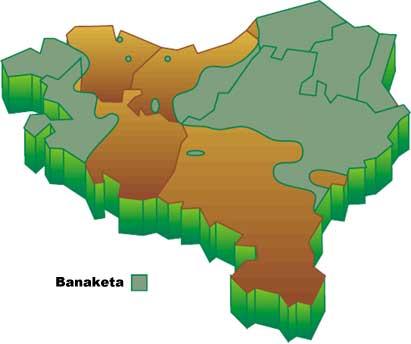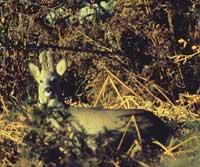The roe deer, prince of the jungles

It has been many years in Leitza since we first saw the roe deer. Although he escaped in a few seconds, we all knew that magnificent animal. However, when we got off the mountain and told our friends, many did not want to believe. And we had to hear “txantxangorri kicks”. Today, however, it is normal in these areas and few would doubt their presence.

In recent times, in addition to the roe deer, there has been a notable increase in deer and wild boars. In the case of corzo, about 50 years ago it was very scarce in the Basque Country, only remained in the forests near Irati. However, in the last 20 years, and for the reasons outlined below, the situation has changed radically. On the one hand, in some rural areas the villages have been emptied and, with it, the number of animals has been reduced and some areas have become jungles. On the other hand, the hunting pressure has decreased, since the hunting of this species has been prohibited for many years and continues to be practiced sustainably. Finally, we must mention the scarcity of enemies, since large mammals today have almost no pressure on wolves, bears or lynxes.
Thus, the roe deer is recolonizing the ancient territories and, with the help of man, filling some news. Proof of this are the recent repopulations of this animal in Leitzaran, Oiz, Pagoeta, Aralar, Lokiz, or Urdaibai. We must not forget that in some regions of the Iberian Peninsula and France this animal is spreading and penetrating the Basque Country spontaneously in different directions, from Landeta to the North, from the East to the Pyrenees or from the West (Demanda, Urbio and Camerostik) to Araba, Bizkaia and Navarra. Seeing that the populations of roe deer are in good health, we will now begin to know a little more about this animal.
The roe deer (Capreolus capreolus) is Europe's smallest deer. In the vicinity it can weigh between 15 and 25 kilos and seems, barefoot, thin and slender. The male has in his head a majestic three-pronged twigs that fall each year towards the month of November so that soon it is renewed and ready for April or May. The branches are tools for defense, to attract the female and to be able to measure forces without pain in the heat.
The skin of this mammal is reddish in summer and more gray and robust in winter. At the end appears the black mustache and the white chin. On the back, it also features a whitish spot that separates it when it flees in the dark forest.

As already indicated, this mammal appears linked to forests and, above all, lives in areas of forests and grasslands with abundant scrub. It is located in both deciduous and mixed forests and easily adapts to different homes. The presence of water is essential and the drought of recent years has caused the populations of the south of the peninsula have worsened.
As for its nature, it is a restless, discreet and fleeting. Thanks to fine hearing and smell, it hides at a glance before we see it. When it detects an enemy, it can also start barking to warn the rockets and warn the enemy that it has been detected.
On the other hand, it is a territorial and sedentary animal. It usually has an area of approximately 40 hectares, but this measure may vary depending on the density and place of residence. As a guideline, the average population of the cork areas of Navarre is 0.67 specimens per 100 hectares and in the areas with the highest number of specimens, 3.7 corks per 100 hectares. These densities are quite far from those in many European regions, where it is not uncommon for 10 to 20 specimens per 100 hectares. Among the causes of lower density here, furtivism and other herbivores (deer, sheep, etc.) we can mention the competition they have. Although, as has been said, it is territorialist, its behavior throughout the year is different.
Females normally accompany the offspring and males lead a lonely life. In winter they form small groups, but towards spring both males and females become territorial. The males will mark branches to young trees and take care of their territory with rigor. Females, on the other hand, have a larger territory and are less strict when it comes to driving away peers.

As for food, corzo is a herbivore that requires a great plant diversity. Throughout the day it consumes 3-4 kilos, always choosing the most nutritious plants and buds. Because the intestine of the small ungulates is short, the food they eat cannot make much of them, so they look for the most nutritious parts of the plants (buds...) and throughout the day they have to make many meals. In red winter, when you only have to settle for tree barks, brambles, etc., but considerably reduces the activity to reduce energy needs.
With the summer comes the time of love and in this time there are many fights of males. If there is no high density of females, the male will only take one female. The courtship is usually long, the male runs behind the female until it allows it to cover it. Then there is delayed gestation: the fertilized egg remains in the uterus for several months without developing so that the birth occurs in May or June, at the most appropriate time. Each female gives most of the time two offspring dressed in white spots. Their breastfeeding period lasts about three months and in 9-12 months they separate from their mother.
As for its worldwide distribution, the roe deer is found in Europe and North Asia. As with other species of mammals, the weight of this animal is greater as it moves north and east; in Siberia, for example, you can find corks of 50 kilos, very cheerful!
Species: Capreolus capreolus Family: cérvids Order: artiodactilos Class: mammals |





